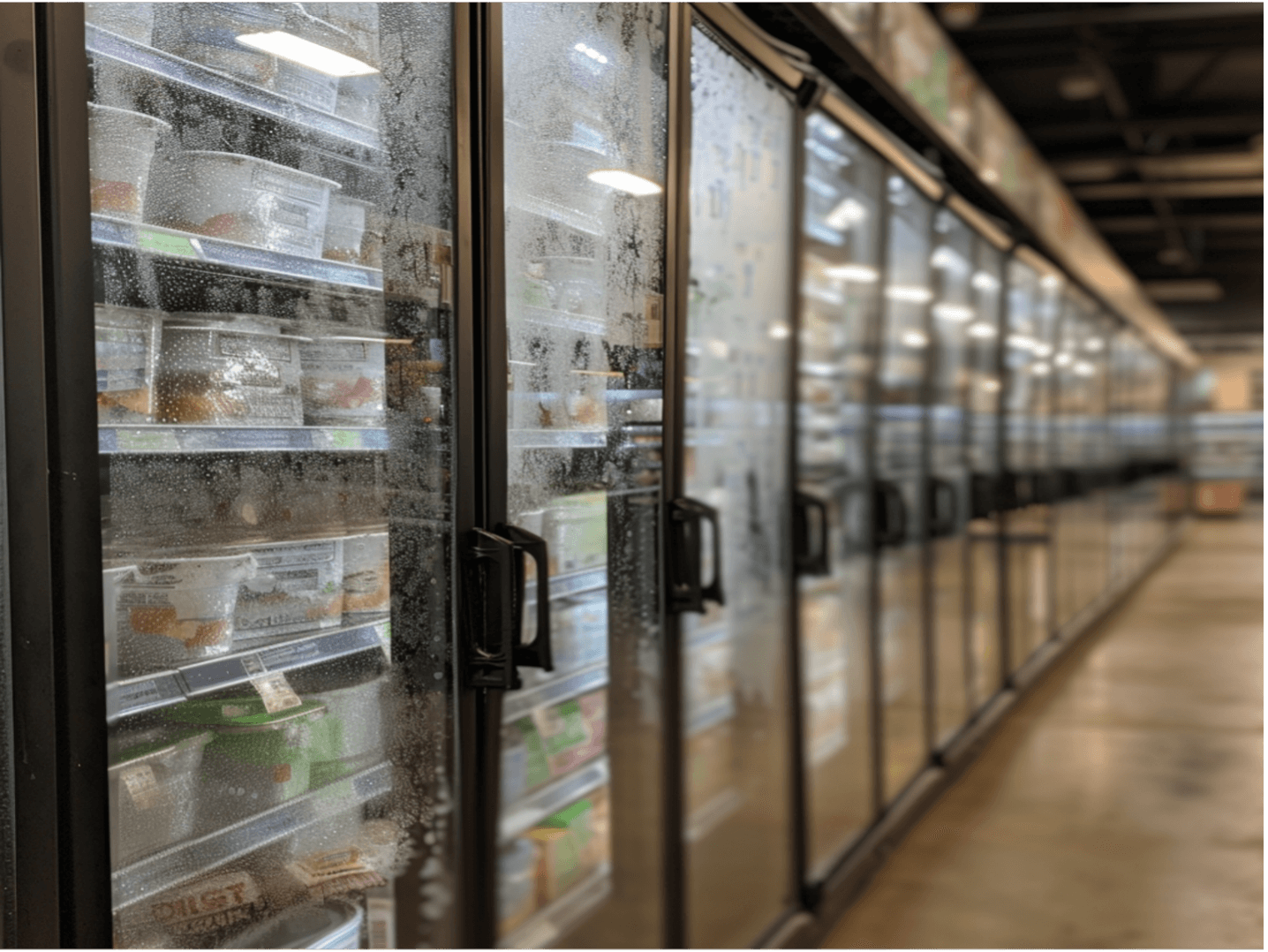Debunking the Myth Of ‘Control to RH’
You’re likely acquainted with the term “relative humidity,” or RH. In various settings, such as residential spaces, there’s ample published guidance suggesting that maintaining a humidity level between 30% and 50% RH is optimal for human comfort. However, this guideline doesn’t translate to food retail environments, which is our area of focus.
Historically in the HVAC industry, controlling humidity was primarily done using RH, a term associated with human comfort, rather than focusing on space dew point. However, this method presents a significant flaw due to RH’s dependency on temperature.
In other words, warming up air increases its capacity to retain moisture. Consequently, as air is heated and its ability to hold moisture enhances, the RH readings deceivingly drop. This suggests a reduction in air moisture when there is no change.
An Analogy To Illustrate The Differences Between RH and Dew Point
A few years ago, a colleague of mine used a ‘bucket of water’ analogy to drive home this important point, which I will now share with you.
Imagine you have a 1-gallon bucket and it’s half full of water. Let’s equate that to a humidity reading of 50% RH. If you now have a bigger, 5-gallon bucket, and you pour the water from that 1-gallon bucket into the 5-gallon bucket, the % RH would now read far lower, even though no moisture was removed. The space is not actually any drier as you have the same amount of water in the air.
Why? Because as mentioned above, when you heat up a parcel of air, the RH reading drops; however, the space is not actually any drier because hot air simply holds more moisture.
Why This Is Critical In The Food Retail Environment

In a food retail environment, when you control to RH by heating the air, your RH levels decrease. However, the moisture that remains in the air will then migrate to your open refrigeration cases to get removed instead of being removed by your HVAC system. This is not only costly from an energy perspective but also taxing on your refrigeration system. This can lead to defrost issues and maintenance issues, and in many instances, manufacturers will not warrant their cases when humidity of the space is too high.
This is why it is so important to measure humidity based on dew point. Dew point is an exact science – it’s the exact point at which water will condense out of the air, and hence the ideal measure to control latent cooling. It’s not relative to temperature – it’s a finite value.
This is why, at Flō, we control to Dew Point.
Author: Barb Zyskowski
Flō Energy Solutions has worked exclusively in food retail for 25 years. Check out our website to learn more about how we partner with food retailers to create an optimal balance of energy use, moisture control, mechanical systems integration, and store comfort.
